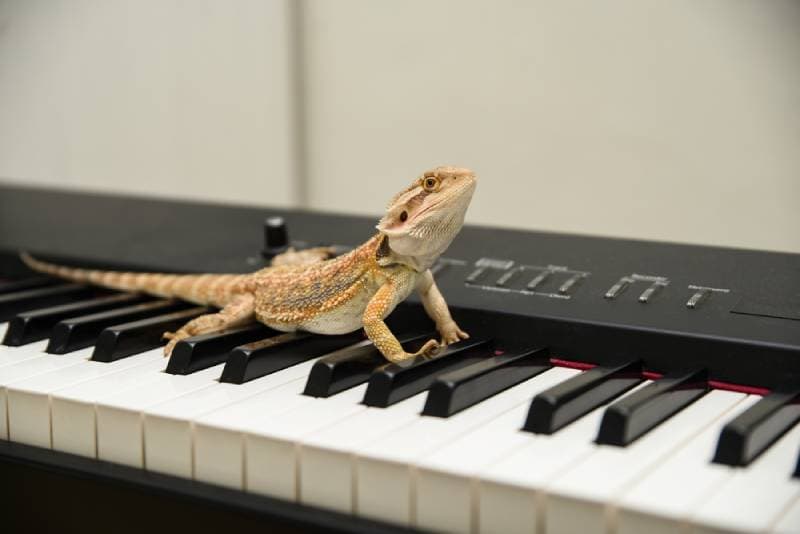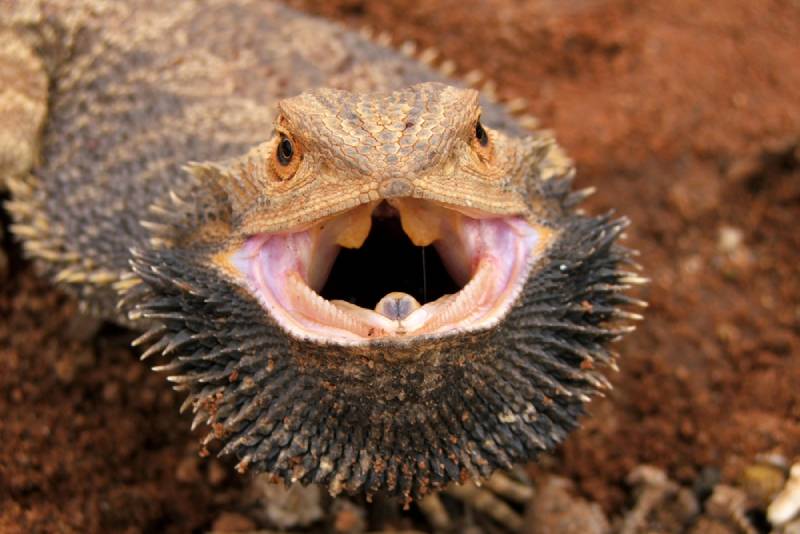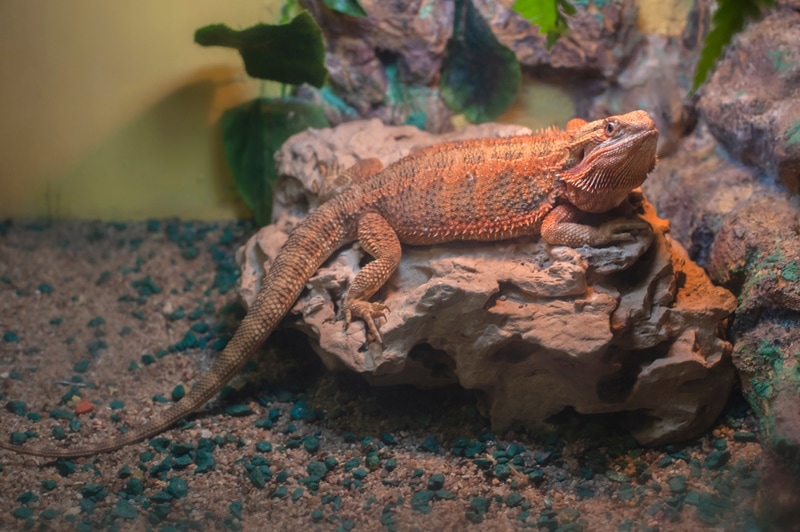Blue Tongue Skink vs. Bearded Dragon: The Differences (With Pictures)

Updated on
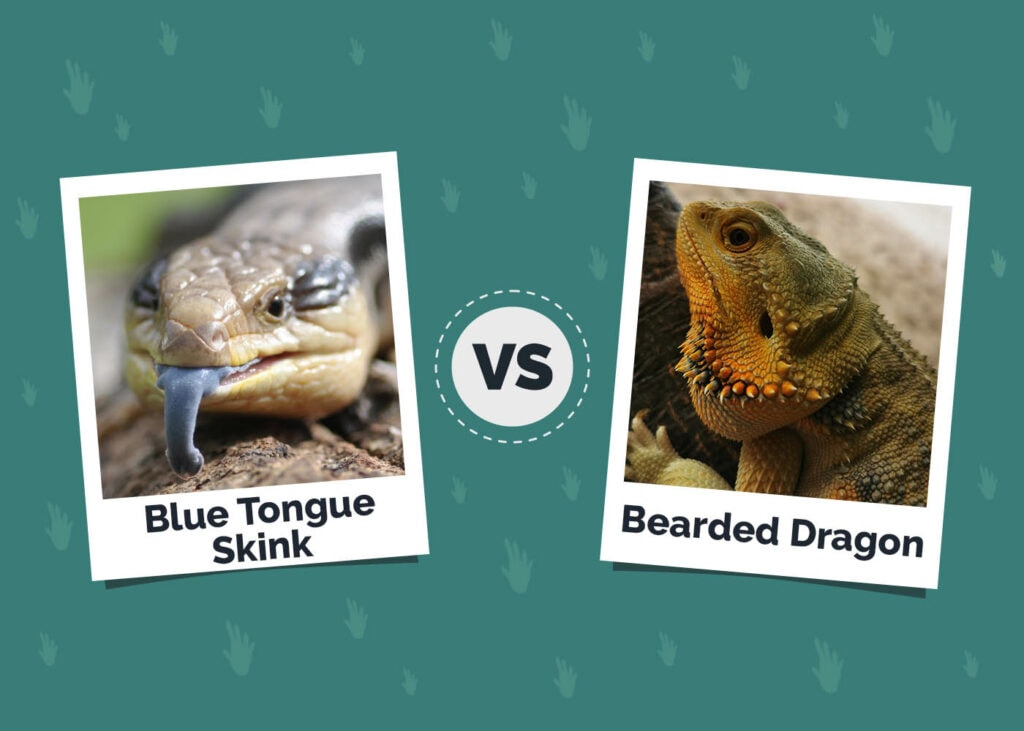
Click to Skip Ahead
The Blue Tongue Skink and Bearded Dragon are both considered excellent pet lizard species and are good for beginners. They are docile lizards that have unique, even quirky, characteristics, and they are unlikely to bite or injure handlers.
However, despite both being popular pets, there are some distinct differences, including physically but also in their care levels and their suitability for different types of pet owners. The Bearded Dragon is more tolerant of handling whereas the Blue Tongue Skin, although docile, prefers to be left alone and won’t actively look for attention. But, the Bearded Dragon has more involved dietary requirements.
To help you determine which makes the better pet for your home, we look at the differences and some of the similarities between these two intriguing reptiles.
Visual Differences
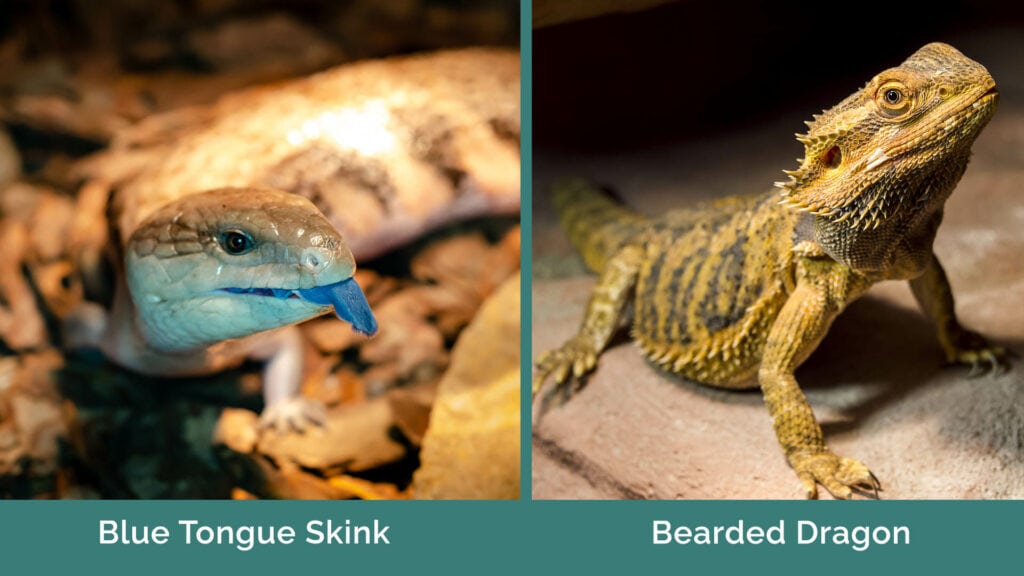
At a Glance
- Average length (adult): 15–20 inches
- Average weight (adult): 14–20 ounces
- Lifespan: 15–20 years
- Care requirements: Moderate
- Human-friendly: Docile but not keen on handling
- Diet: Insects and vegetables
- Average height (adult): 16–22 inches
- Average weight (adult): 10–18 ounces
- Lifespan: 8–10 years
- Care requirements: High
- Human-friendly: Yes
- Diet: Insects and vegetables
Blue Tongue Skink Overview

The Blue Tongue Skink is a medium-sized lizard that originally hails from the forests and scrublands of Australia and New Guinea. They have glossy-looking scales, with a similar appearance to the scales of a snake, but their most prominent physical characteristic is a bright blue tongue. The long tongue is not only beneficial for hunting prey, but its bright color can be used to deter predators as bright coloring typically implies poison or venom. The tongue is also used to attract a mate.
Temperament
The Blue Tongue Skink is known for being a docile reptile, which means that it will rarely try and bite and will be tolerant of people in its vicinity. However, the breed is not known to be too keen on being picked up and handled. It is generally best kept as an observational pet, one for owners that prefer to watch their pet, rather than handle it. With that said, the Skink is said to be intelligent and may learn to recognize its owner, eventually becoming tolerant of handling by them but shunning attempts by strangers and visitors.
Habitat Requirements
Blue Tongue Skinks are terrestrial, rather than arboreal, which means they need more horizontal space than vertical space, although they are quite nimble climbers and will enjoy the addition of rocks or logs to climb on. A single skink needs a terrarium that has at least 8 square feet of floor space.
The heat of the tank needs to range from 80°F at the cool end of the tank to 100°F at the basking end. A basking lamp should be left on for around 12 hours a day, and they need a UVB source on during this period, with the heat and light replicating a natural day/night cycle that the skink would experience in its wild habitat. Depending on the type of Blue Tongue Skink you have, you will need to provide a humidity level between 40% and 80%.

Care Requirements
Blue Tongue Skinks are omnivores. They eat a combination of animal and plant-based ingredients. A good ratio is to feed 50% vegetables, 40% insects, and 10% fruit. Skinks can become obese, so you will need to monitor food intake carefully. Your Skink will benefit from being given a supplement containing calcium and vitamin D3. The Blue Tongue Skink can live as long as 20 years.
Suitable For:
Prospective pet lizard owners who want a docile but shy pet that prefers to be watched rather than handled.
- Docile pet reptiles
- Striking appearance
- Care requirements aren’t too difficult
- Not always keen on being handled and held
Bearded Dragon Overview
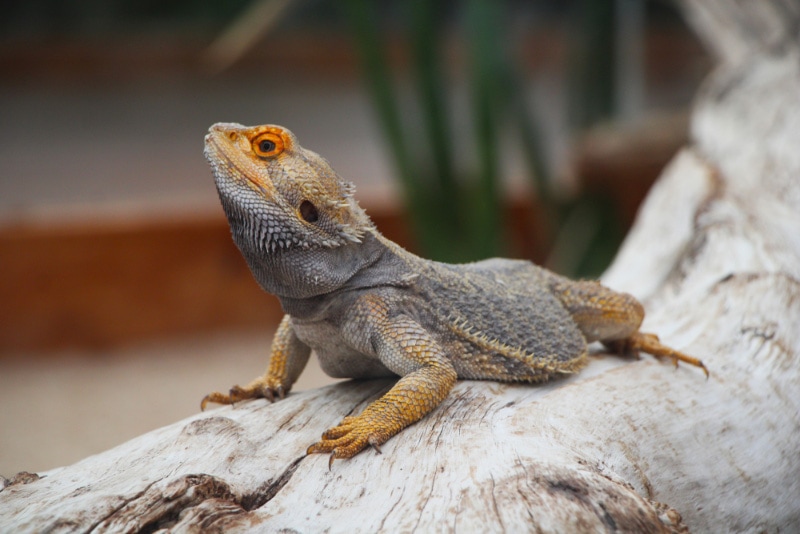
The Bearded Dragon is the most popular breed of pet lizard and is widely considered the best species for beginners because it is tolerant of handling and relatively easy to care for, although it does have specific lighting, heating, and dietary requirements. They live in a variety of humid, hot environments in Australia, and depending on the exact species of Bearded Dragon, they can vary in color from brown to bright orange or red. Their main physical characteristic is their beard, which is a pouch covered in spines that can be inflated to appear bigger.
Temperament
The all-around amiability of the Bearded Dragon is why it has become such a popular pet reptile. The Beardie not only tolerates being handled but will actively try to encourage owners to let it out of its habitat for some lap time. It rarely bites, although it can hurt if it does bite, but the Bearded Dragon can be quite aggressive with other beardies. This is especially true of males on females. With that said, an adult Bearded Dragon that has never been handled may not be tolerant, and sessions of the enclosure should always be kept fairly short to ensure that the Bearded Dragon does not get too cold or stressed.
Habitat Requirements
Like skinks, Bearded Dragons are primarily terrestrial and need more horizontal space than vertical space. 8 square feet of floor space should be considered the minimum tank size for a beardie. Also like the skink, a beardie needs a heat gradient in its tank with a cooler end and a hotter end. The temperature should range from 80°F to between 100°F and 110°F. Humidity needs to be between 30% and 60%.
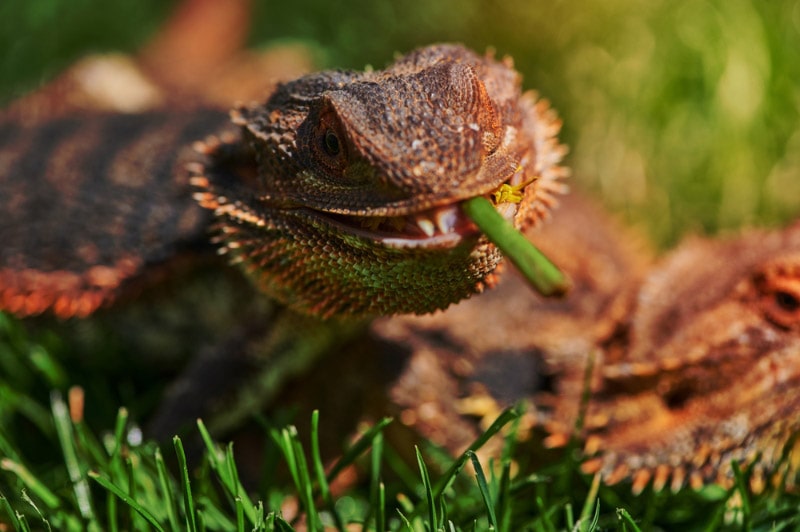
Care Requirements
The Bearded Dragon is also omnivorous, eating both plant and animal matter, and typically with a ratio of 50% plant matter to 50% vegetables. The insects fed, which can include dubia roaches and crickets, need to be fed live, or the Beardie will likely ignore them. Bearded Dragons also need UVB light and should be given a 12-hour day/night cycle.
Suitable For:
Any lizard owner, no matter how experienced: especially one that is looking for a reptile that is not only tolerant of handling but enjoys spending time with its humans. The owner needs to be willing to feed live insects.
- Very tolerant of handling
- Can come in a range of colors
- Very popular and easy to find
- Needs to be fed live insects
The Differences Between Blue Tongue Skink & Bearded Dragon
Price and Availability
Both the Blue Tongue Skink and the Bearded Dragon are very popular pet reptile species, but as the most popular of all the lizards, the Bearded Dragon is readily available and very easy to find even in some general pet stores, as well as through breeders and specialist pet shops. The availability also means that Bearded Dragons do tend to be less expensive than Blue Tongue Skinks, although some of the rarer and more highly sought-after morphs and colors can be more expensive.
Both lizards need similar equipment, which means that the availability of terrariums and other items is similar for both species. In terms of availability, the Bearded Dragon wins because it is easier to find, but if you’re looking for a more unique and unusual pet, the Blue Tongue Skink should be your first choice.
Sociability and Handling
Both species are popular as pet lizards because they are not considered aggressive. Neither will usually attempt to bite people. However, while the Bearded Dragons are generally tolerant of being handled by anybody, the Blue Tongue Skink can be a little pickier of its handlers. It will form a bond with, and potentially even recognize, its owner.
Some will tolerate handling by their owners, but most prefer to be left alone and watched, rather than being regularly handled. In both cases, if you want a lizard that at least peacefully tolerates being picked up, you should start regularly handling your lizard when it is young and continue to do so for some time every day.
Care Requirements
Both species have similar care requirements. They need a terrarium or enclosure that is at least 8 feet square, and they both prefer horizontal rather than vertical space. They need a gradient of heat from a cooler end of around 80°F to a much hotter end with a basking spot. The basking temperature needs to be between 100°F and 110°F. When it comes to diet, both are omnivores. However, while some owners report feeding cat and dog food to their Blue Tongue Skink has led to a healthy pet,
Bearded Dragons have more specific dietary requirements, especially since they require live insects as part of their diet. Both species are prone to putting on weight, so you do need to take care not to overfeed them.
Life Expectancy and Health Issues
The Bearded Dragon will usually live around 10 years while the Blue Tongue Skink can live as long as 20 years with a good diet and general healthcare. Both naturally brumate and like all lizards, they shed their skin at least once or twice a year as adults, and more frequently as juveniles. Metabolic bone disease is a potential problem for both species so ensure that they are getting enough calcium, vitamin D3, and other essential vitamins and minerals in their diet, from UVB lighting, and through supplementation.
Which Breed Is Right for You?
The Bearded Dragon is the most popular of all pet reptile species because it is docile and tolerant of handling. But it, like the Blue Tongue Skink, does have very specific care requirements, especially in its need for a sizable terrarium with appropriate lighting and heating, and in its need to be given live insects as part of its daily diet.
The Blue Tongue Skink has a similar diet but, according to some keepers, is more tolerant of being given cat or dog food, although we recommend feeding live insects and vegetables in preference to commercial pet food. With good care and diet, Blue Tongue Skinks will typically live longer than Bearded Dragons, which may be important to you, but with a typical 10-year lifespan, beardies still live a fairly long life.
If you want a lizard you can handle and don’t mind feeding live insects, the beardie is your best choice, but if you want something more unusual and don’t mind the prospect that your pet won’t want to be handled, the Blue Tongue Skink is a more unusual option, albeit more difficult to find.
Featured Image Credit: (L) Chris Humphries, Shutterstock | (R) Tay Chee Keong, Shutterstock

